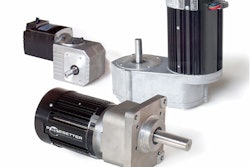Part of this growth, says Jim Ralston, wireless sales engineer for ProSoft Technology Inc., Bakersfield, Calif., is due to the emergence of reliable radio frequency (RF) technologies capable of operating consistently in harsh industrial environments. But as more systems become dependant on wireless networks, it is important to include intelligent diagnostics to detect network degradation and prevent communication failures before they occur.
Ralston notes that diagnostic techniques vary greatly by industrial wireless manufacturer. There are some “industrial” wireless devices that do not include any diagnostic information at all. Either the data is received correctly or not. These are understandably very difficult to troubleshoot when problems are encountered. Other systems provide off-line diagnostics, for which communication must be stopped in order to access the diagnostic information. These systems at least provide some insight into the cause, but only after a failure has occurred, Ralston observes.
Online wireless diagnostics, on the other hand, provide continuous monitoring of wireless performance and hardware conditions. These tools can not only detect a failure, but show if conditions are degrading as well. Because the diagnostic metrics are being monitored in real time, there is no need to shut communications down to check the system.
However, there is no free lunch. Because the diagnostic data travels over the same wireless link as the system data, performance can degrade when diagnostics are active, says Ralston. In systems with a large number of remotes and high amounts of data transfer, online diagnostics may be impractical.
Many methods
Methods for accessing online diagnostic information vary by manufacturer and wireless system. Some wireless serial systems use a second serial port, and communication is done using a menu-driven interface accessible from a dumb terminal program (such as a HyperTerminal). Other online diagnostic systems use a proprietary software program by which the personal computer (PC) attaches to either the secondary serial port or is part of the Ethernet network, and displays vital information about the RF network using a proprietary software program.
Still other systems (commonly those based on the Institute of Electrical and Electronics Engineers’ IEEE 802.11 standard) have embedded Web servers for diagnostic information. The diagnostic information is then displayed using a Web browser. In Ethernet-based wireless networks, potentially anyone on the Ethernet network can view the diagnostic pages of local and remote wireless equipment.
What these methods lack is the ability to easily integrate diagnostic status and information directly into the control system. They are especially burdensome for operators who lack computer skills. For example, expecting a third-shift operator in a wastewater plant to understand the vendor’s diagnostic program, or diagnostic Web page, and diagnose the problem is probably expecting too much. Therefore, it is highly desirable to have a method for remote RF diagnostics by which the control engineer can appropriately embed diagnostic data.
And what is the best method for integrating wireless diagnostics into industrial systems? “OPC (an open communications standard) is likely the best approach, as it was developed specifically for industrial systems, and is widely deployed and supported,” says Ralston. “Using OPC as the basis for RF diagnostics provides any OPC-compliant software programs, such as most major HMI (human-machine interface) and SCADA (supervisory control and data acquisition) software packages, direct access to the diagnostic information. And because control engineers are well versed in developing projects using these programs, wireless diagnostic data is easily included in operator interfaces just like any other tag data point.”
It is important to note that only one server is required to collect the diagnostic information. For Ethernet systems, wireless diagnostic OPC servers can be present anywhere on the network. They are configured to collect the designated diagnostic data for each selected wireless device.
Consider the needs of each user, says Ralston. A production worker probably has no idea what received signal strength indication (RSSI) means, but could convey to the supervisor if the HMI is stating that a wireless link has failed. If the operator is alone, the HMI could advise whom to contact (e.g. the system integrator responsible for the wireless link, or an engineer on call, if it’s a controller problem). The operator also has a way of knowing that the wireless link is functioning, so if a system problem occurs, he knows it is not in communications. Conversely, the engineering manager may want to view all relevant data on a screen monitoring the entire wireless network—the more detail, the better. It is important to tailor the HMI display for the skill sets and knowledge of the user.
Most HMI and SCADA software packages also support alarming and trending functions. Alarms can notify the operator, maintenance manager or engineering manager of a fault condition, such as a wireless link failure, or if communications are degrading, so that preventative action can be scheduled. Alarms can also be sent remotely—such as an e-mail over the Internet, or cell phone text message—so that notification is immediate.
Automated recovery
It is also possible for automation equipment, such as programmable logic controllers (PLCs), to access OPC data within their internal programs. This opens up the possibility of not only notifying operators or managers when a problem occurs, but having the PLC program act on it. For example, if a wireless link fails, then the PLC could activate a back-up communication link, such as a redundant wireless connection. In this case, the system would recover without any human intervention.
● For more information, search keyword “wireless” at www.automationworld.com.
To see the accompanying sidebar to this story - "Working merrily with OPC" - please visit http://www.packworld.com/view-24361

























